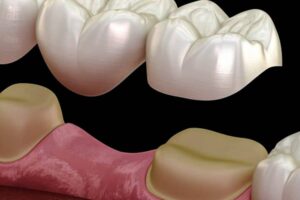Inlays

A custom-made filling known as inlay restoration is made of gold, porcelain, or (ceramic) composite material. Because of how closely they resemble your actual tooth, porcelain inlays are popular. A porcelain inlay is typically created by a qualified dental laboratory and then permanently bonded into the tooth by your dentist.
Inlays can be used to gently restore teeth that have extensive flaws in their fillings or that have been damaged by trauma or decay. As an alternative to traditional silver and composite fillings, inlays are ideal. Additionally, because less tooth structure is destroyed when creating inlays compared to crowns, they are more conservative.
Inlays, like the majority of dental restorations, are not necessarily permanent and may eventually need to be replaced. They are extremely strong and long-lasting, giving you a beautiful, long lasting smile.
Reasons for inlay restorations:
- Cracked or broken teeth
- Teeth are decayed
- Fractured fillings
- Cosmetic enhancement
- Large fillings
What happens when you receive an inlay?
A digital impression of your current tooth is first taken.
The dentist will remove any decay and/or old filling materials while the tooth is numbed. The area will next be meticulously cleaned and prepared, with the surface being carefully shaped to accommodate an inlay restoration. After taking a second digital impression, the inlay is created on CAD/CAM computer.
After the restoration has been milled (15–20 minutes), it will be fitted, and then properly cemented before you go.
After your treatment, you will receive instructions on how to take care of yourself. A healthy diet, regular dentist appointments, and good oral hygiene habits will all help your new inlay last longer.






